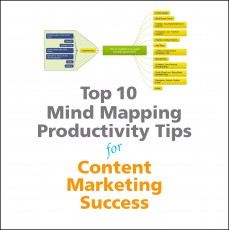
Content is king - a simple yet profound sentence for business owners and online marketers. Generating content that educates, empowers and informs - while promoting it to the right audience, will ultimately help your business grow online.
Content marketing is the art form of attracting and engaging your customers and prospects with content (like blog posts, videos or e-books) that paves the way to stronger relationships between marketers and their audience.
Oftentimes, small businesses don’t have enough time or resources to launch successful content marketing campaigns. This type of “education-based marketing” involves consistent effort, and content creation budgets that some small business owners just doesn’t have. So how do you make content marketing easier for you?
Consider creating content in ways that allow you to present something of incredibly high value to your audience - without spending as much time. You can attend conferences and post your notes, have someone interview you and transcribe the conversation or you could create a poll and write about the results. Don’t overlook the fact, that you can also repurpose older content and giving them new value. Looking for more tips? Try these three…
- Always make your content relevant to your brand and to what your business or company upholds. Make sure that your content reflects what your brand is truly about.
- Make sure your content is shareable. Have share buttons for social media sites like Twitter, Facebook and LinkedIn, to make your information sharable to your reader’s network with the click of a button.
- Consider telling it from a story point of view. A real human experience will attract greater attention and is more relatable for your audience. People will want to read about something that they can connect with as a similar experience.
If you’re a business owner, don’t overlook the fact that your employees are knowledgeable and have a unique perspective of their industry. They will have certain insights from customer interactions that can be used for educational content. If you stay creative, and think with an open mind – you can come up with a large variety of resources from which to pull from!
Whatever source you use to pull resourceful education from, make sure it’s a high value to your audience, and something helps them see why you are the right company they should trust. Content marketing takes a continual effort, and will work for you when you remain consistent.
Image Credit: Eric D. Wheeler

 Because of the advances in mobile apps and more web integration with social communities, (and faster internet for almost everyone), marketers have a unique advantage to more quickly and easily reach their target prospects.
Because of the advances in mobile apps and more web integration with social communities, (and faster internet for almost everyone), marketers have a unique advantage to more quickly and easily reach their target prospects.
 With the rapid change in technology and the social changes it brings, there can be an uncertainty to the stability of your business. After all, big changes are hard to keep up with, especially when you don’t have a business strategy. To be successful, you sometimes have to take risks in new technologies or mediums. After all, as an entrepreneur, sometimes we’re called upon to take calculated risks in order to take your business to the next level.
With the rapid change in technology and the social changes it brings, there can be an uncertainty to the stability of your business. After all, big changes are hard to keep up with, especially when you don’t have a business strategy. To be successful, you sometimes have to take risks in new technologies or mediums. After all, as an entrepreneur, sometimes we’re called upon to take calculated risks in order to take your business to the next level. The birth of social networking sites like Facebook, Twitter, LinkedIn and Pinterest has opened doors for communication, connecting and expression for online marketers. These communities allow a level playing ground for discussions with marketers and prospects to interact and engage with each other. These forums give business owners and marketing professionals the opportunity to promote their brands by educating their prospects about their products and services - while potential and current customers can offer their suggestions and opinions for a better marketing experience.
The birth of social networking sites like Facebook, Twitter, LinkedIn and Pinterest has opened doors for communication, connecting and expression for online marketers. These communities allow a level playing ground for discussions with marketers and prospects to interact and engage with each other. These forums give business owners and marketing professionals the opportunity to promote their brands by educating their prospects about their products and services - while potential and current customers can offer their suggestions and opinions for a better marketing experience.




